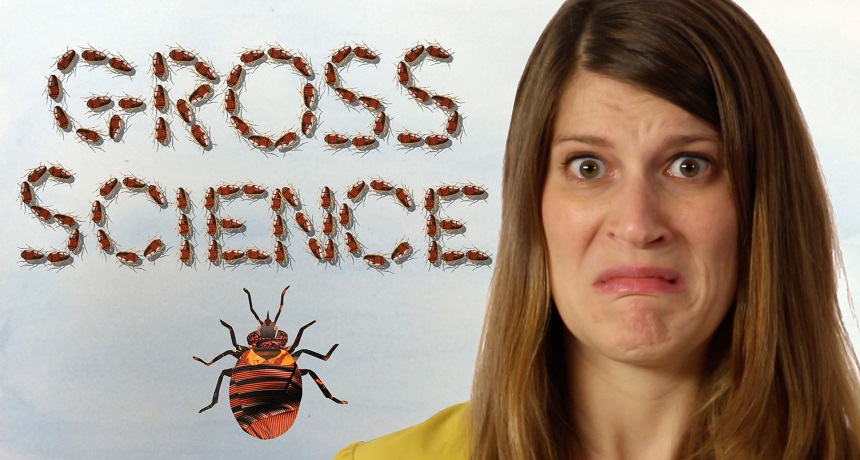Get fascinated by the disgusting with “Gross Science”
When something is gross, we can’t look away — but we might also end up learning something important

Science can be disgusting, but it can also be fascinating in a new video series.
WGBH Educational Foundation
The world is full of disgusting things. Parasites come squirming out of people’s feet. Sea cucumbers vomit up their guts. But the repulsive also can fascinate us and introduce us to important aspects of science. And that’s the idea behind the new YouTube series “Gross Science.”
“When I was a kid, gross things were what got me inspired about science,” says show host Anna Rothschild. She is a science journalist who works for NOVA, a television show on PBS. So when PBS Digital Studios and NOVA asked Rothschild about doing a YouTube series, “the first thing that came to my mind was to do gross stuff.”
GROSS OUT A new YouTube series disgusts and educates. Gross Science/PBS Digital Studios |
The result is a series of weekly two-minute videos highlighting everything from kangaroo farts to diseases that make you smell like maple syrup. Each video tells a story, such as how those kangaroo farts might be used to combat climate change. The videos are enlivened with animations that Rothschild draws herself.
The videos are written for students in middle and early high school, but will entertain (and gross out) every age. Rothschild makes sure that the stories go beyond the simply revolting. Kangaroo farts are an occasion to talk about greenhouse gases. Guinea worms — nasty parasites that used to cause horribly painful infections all over Asia and Africa — provide an opportunity to show a parasite’s life cycle. That episode also points to how scientists are helping people around the world get rid of the worm.
Overall, the series is fun and a way to hook students, friends or family on science. New videos go up every Wednesday. Check them out by clicking on the video above or at the YouTube channel here. But be forewarned: Some of the video segments can be pretty stomach churning, so you might not want to watch them over lunch.
Follow Eureka! Lab on Twitter
Power Words
(for more about Power Words, click here)
climate The weather conditions prevailing in an area in general or over a long period.
climate change Long-term, significant change in the climate of Earth. It can happen naturally or in response to human activities, including the burning of fossil fuels and clearing of forests.
Daphnia magna Also known as water fleas, these are actually small, freshwater crustaceans. They are near the bottom of the food chain, serving as a major energy source for many small fish.
greenhouse gas A gas that contributes to the greenhouse effect by absorbing heat. Carbon dioxide is one example of a greenhouse gas.
greenhouse effect The warming of Earth’s atmosphere due to the buildup of heat-trapping gases, such as carbon dioxide and methane. Scientists refer to these pollutants as greenhouse gases. The greenhouse effect also can occur in smaller environments. For instance, when cars are left in the sun, the incoming sunlight turns to heat, becomes trapped inside and quickly can make the indoor temperature a health risk.
guinea worm (Dracunculus medinensis) This species of nematode, or roundworm, causes dracunculiasis, or guinea worm disease. The worms can enter the body when someone drinks water contaminated with tiny aquatic creatures called water fleas that carry the parasite. The guinea worm lives and mates inside the human body. After about a year, someone infected with a guinea worm will feel a burning sensation in on eof their lower limbs, such as a leg or foot. The burning is caused by the female guinea worm, forming a blister in the skin. When the patient puts their leg or foot into water to relieve the burning feeling, the female worm releases her eggs into the water, starting the life cycle over again.
nematode A type of roundworm, usually found in soil, that can also live within other creatures as a parasite. It is very small, with no eyes, ears or nose.
parasite An organism that gets benefits from another species, called a host, but doesn’t provide it any benefits. Classic examples of parasites include ticks, fleas and tapeworms.